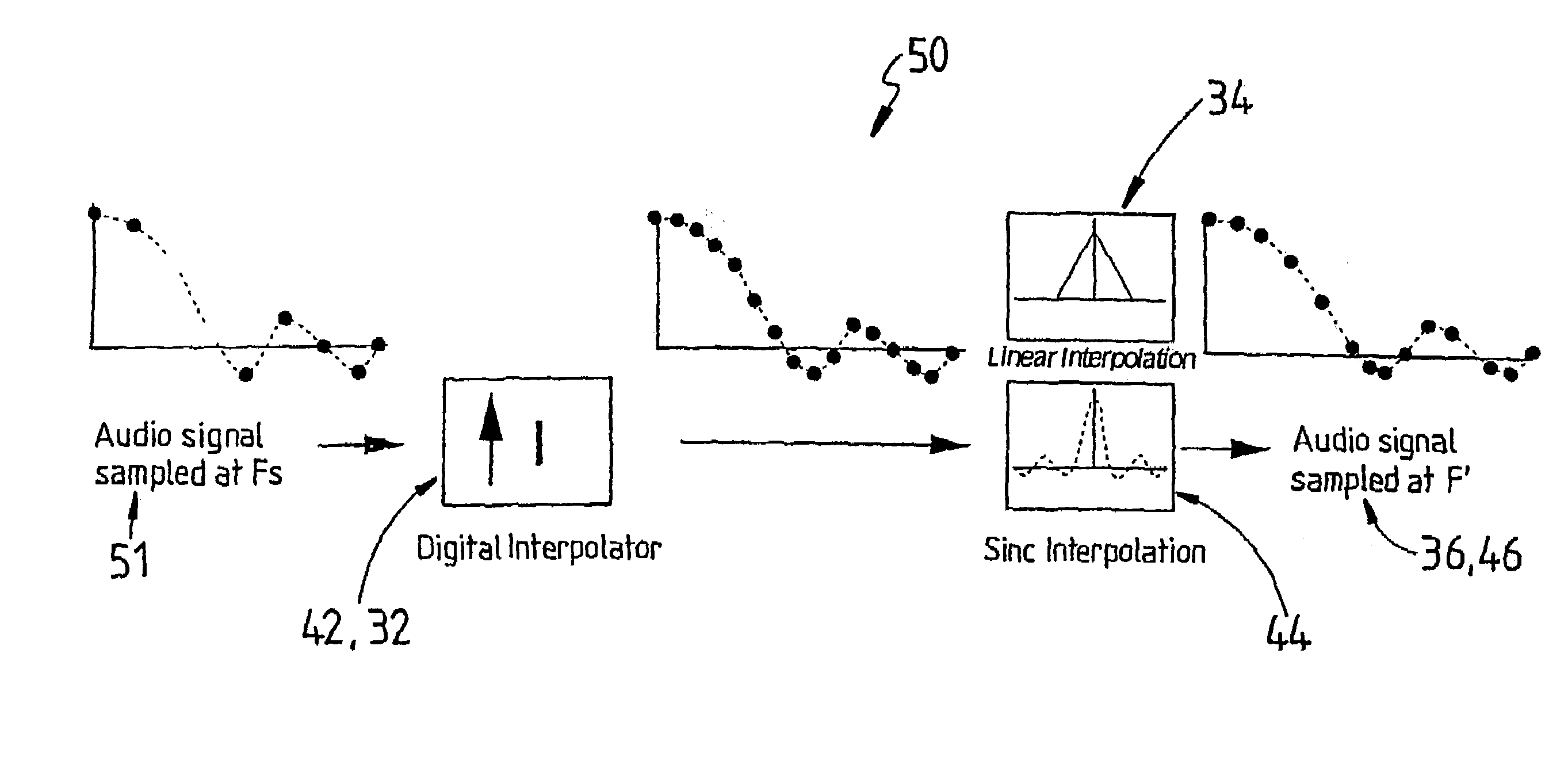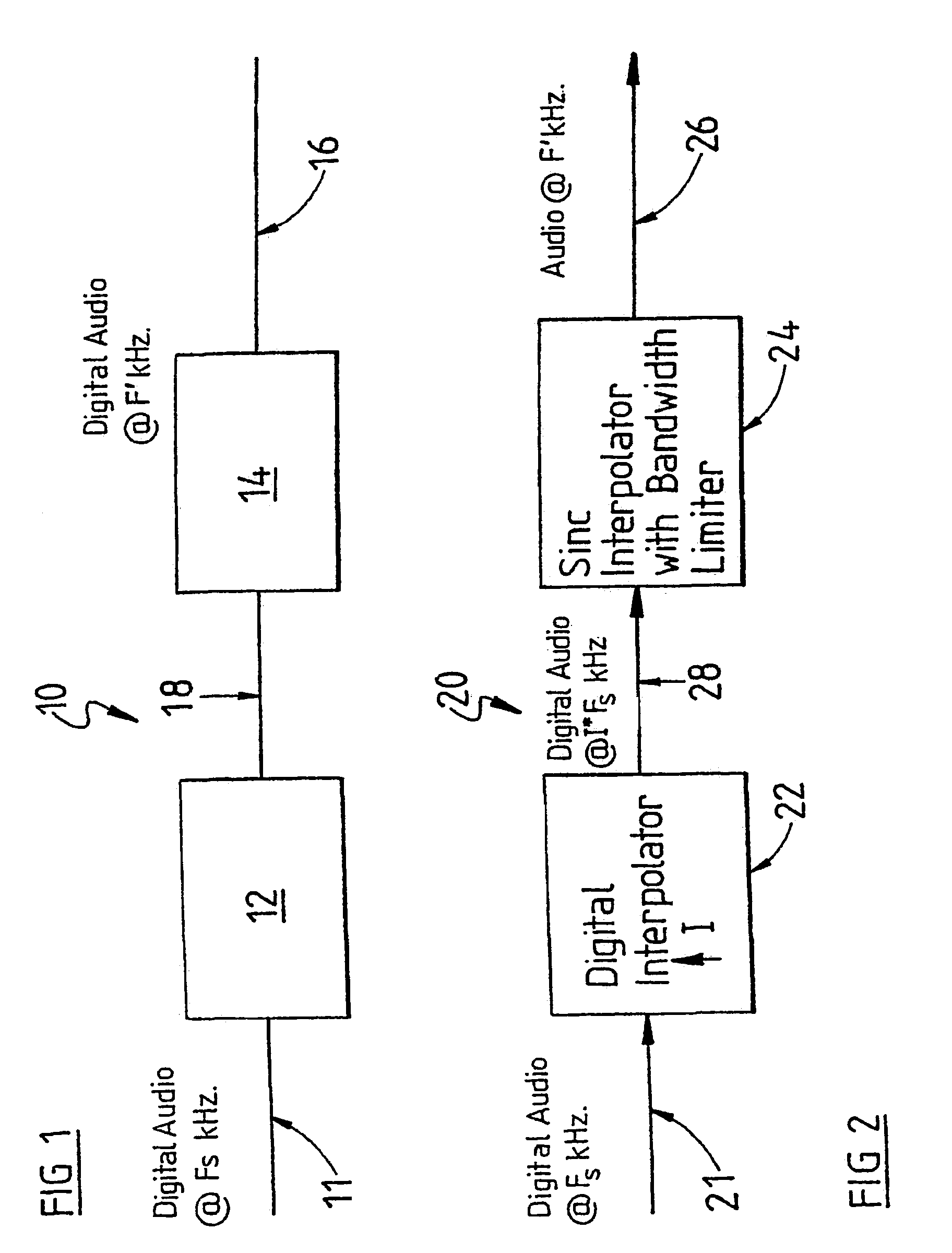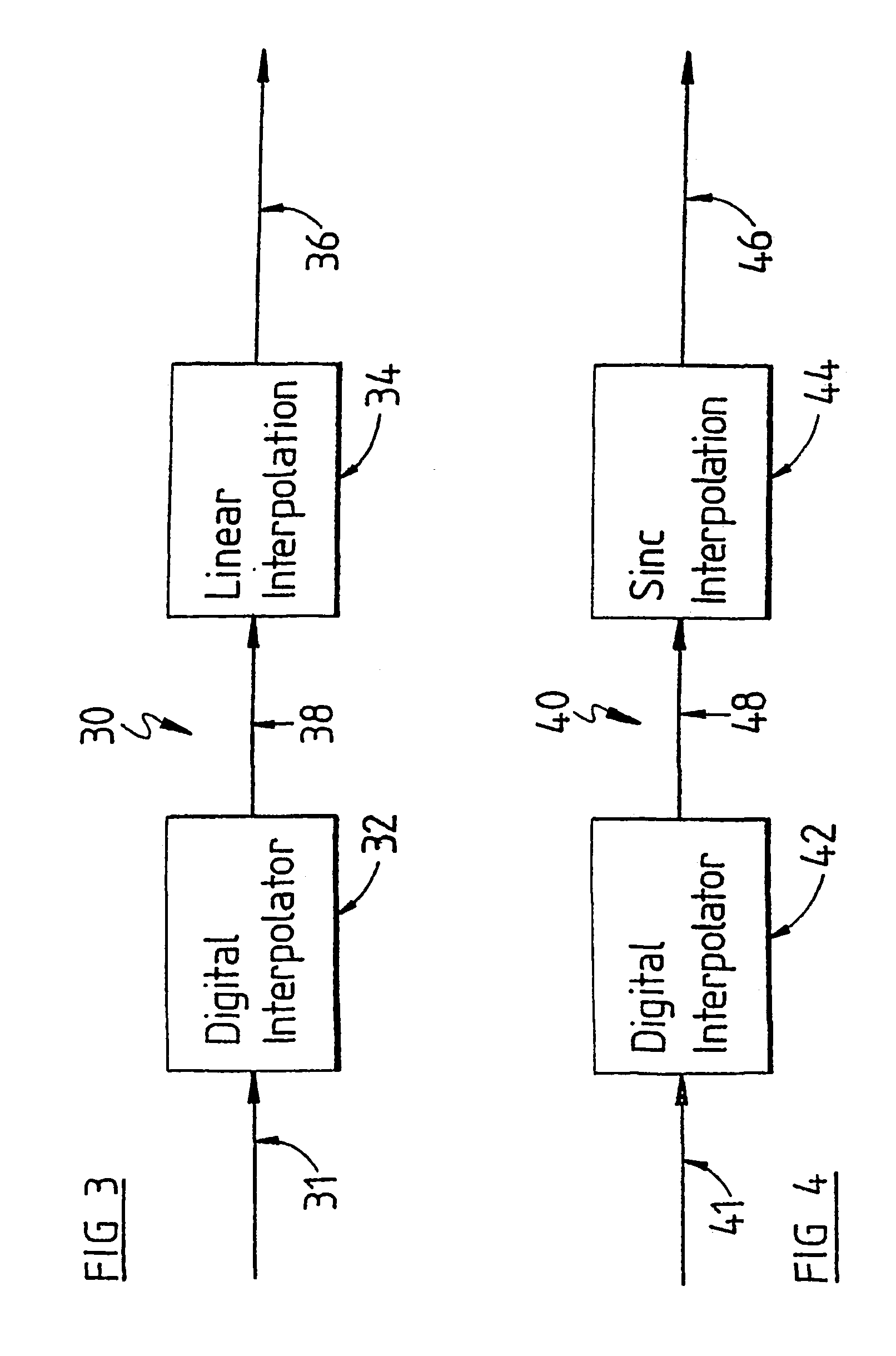Universal sampling rate converter for digital audio frequencies
a technology of universal sampling rate and converter, applied in the direction of speech analysis, impedence network, instruments, etc., can solve the problems of not being particularly suited to many arbitrary ratios, high cost and limited, simple signal at output rate, etc., to reduce program code size, simple structure, and the effect of reducing the size of the program
- Summary
- Abstract
- Description
- Claims
- Application Information
AI Technical Summary
Benefits of technology
Problems solved by technology
Method used
Image
Examples
Embodiment Construction
[0033]FIG. 1 shows an audio frequency converter 10 according to the prior art. This employs a digital expansion stage 12, where the sampling frequency is increased to a significantly high integral value, such as a suitable power of 2, followed by an analogue interpolation stage 14 where sample values, at points corresponding to output sampling frequency, are computed.
[0034]Consider that x[n] is a uniformly sampled version of the bandlimited analogue signal x(t). If the sampling frequency is Fs, therefore the time period is Ts, then x[n]=x(nTs).
[0035]Moreover, if x(t) was band-limited to Fs / 2, then perfect reconstruction of x(t) from x[n] can be obtained by applying the interpolation function (sampling theorem)
[0036]x(t)=∑k=∞∞x[k]ϕk(t)(1)
where
[0037]ϕk(t)=ωcTsπsin[ωc(t-kTs)]ωc(t-kTs)(2)
and
ωc=πƒs; the cutoff frequency
[0038]Since the summation limit is from −∞ to ∞it cannot be practically implemented. If non-uniform sampling or finite length is considered (about the point of...
PUM
 Login to View More
Login to View More Abstract
Description
Claims
Application Information
 Login to View More
Login to View More - R&D
- Intellectual Property
- Life Sciences
- Materials
- Tech Scout
- Unparalleled Data Quality
- Higher Quality Content
- 60% Fewer Hallucinations
Browse by: Latest US Patents, China's latest patents, Technical Efficacy Thesaurus, Application Domain, Technology Topic, Popular Technical Reports.
© 2025 PatSnap. All rights reserved.Legal|Privacy policy|Modern Slavery Act Transparency Statement|Sitemap|About US| Contact US: help@patsnap.com



